
Creating a great custom t-shirt requires finding a balance between appearance and communication. Using a QR code in your design is a simple way to provide more information about your event, business, or organization. This article shows you how to create a t-shirt with a QR code. First, some basics about QR codes.
What are QR codes?
A QR code is a two-dimensional barcode that can be scanned using a smartphone or other mobile device to access additional information. That information can include anything from a website URL, contact information, or even a video. Also known as a Quick Response code, it looks like a set of black and white squares arranged on a grid.
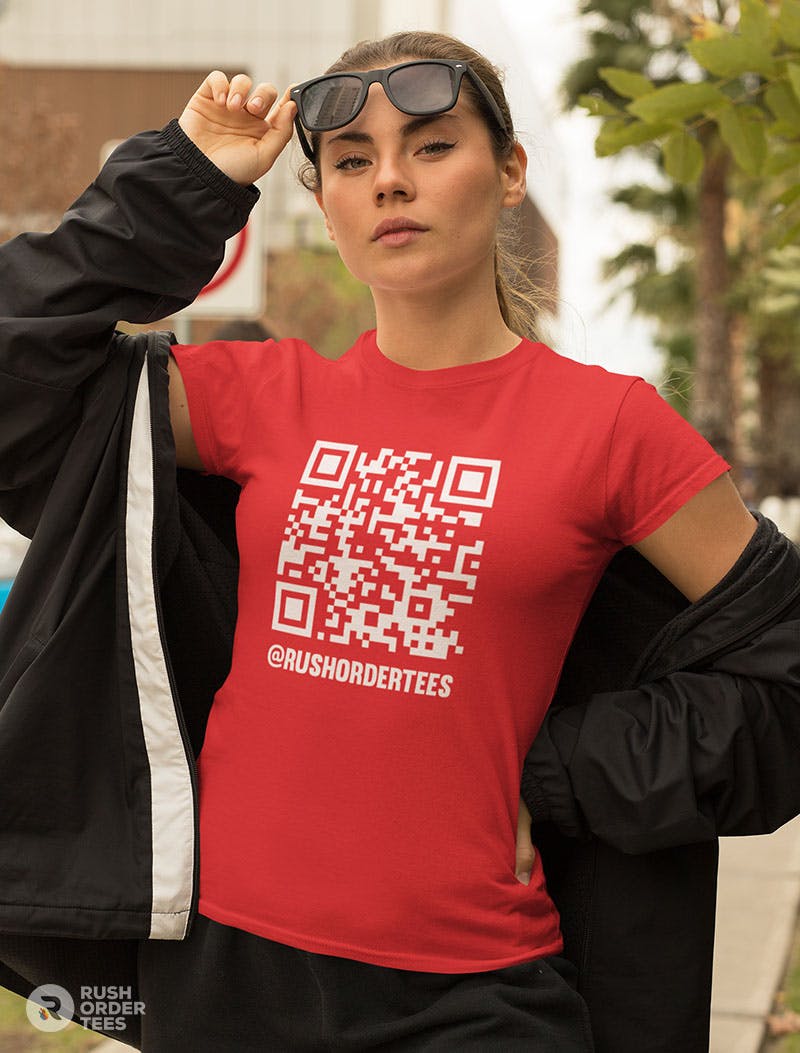
Benefits of using QR codes in t-shirt design
QR codes not only help simplify a design, but they are an innovative way to incorporate technology into marketing. They help businesses engage with their customers, provide useful information, and track the success of their campaigns. Benefits include:
- Easy access to information: QR codes make sharing information easy.
- An interactive experience: QR codes can provide an interactive experience.
- Tracking: The use of QR codes can be tracked, and the data analyzed.
- Cost-effectiveness: Adding a QR code to a t-shirt is easy and inexpensive.
Considerations before creating a QR code
Before generating the graphic to be included your design and uploading your artwork, considering the following questions will make the process go more smoothly.
What information am I sharing?
Decide on the exact link you are sending people to. Ideally, it should be a high-level page on your website that leads to other, more specific information the user may be searching for. If you link to a page that is too specific, the user may not know how to “go back” to find the broader range of information.
For example, if it's a running shirt, link to a main page that includes an index of links to more specific information, such as sponsors, race details, etc. Keep it high-level and link your main page.
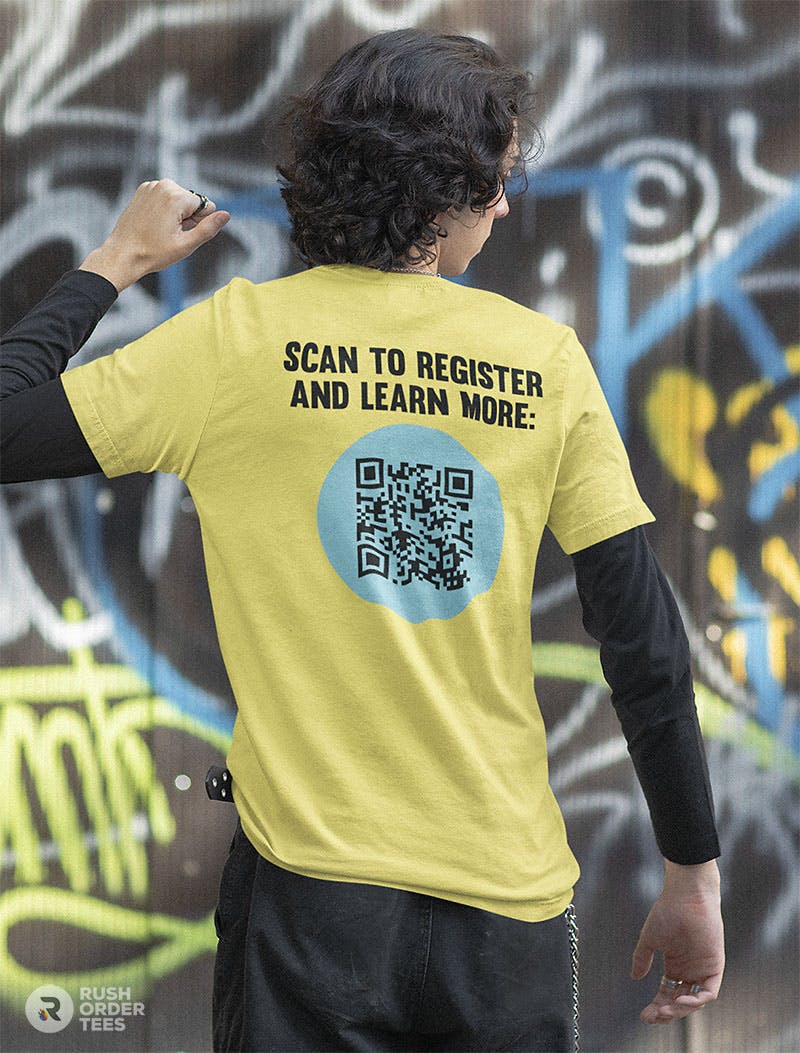
Static vs. Dynamic
Static QR codes contain fixed information that cannot be changed once the code is generated. This means that the same information will always be displayed when the code is scanned, regardless of when or where it is scanned. Static QR codes are often used for more permanent information, such as contact information, URLs, or social media profiles.
Dynamic QR codes allow for the information contained within the code to be changed even after the code is generated. This means that the same QR code can be used for different purposes or to display different information depending on the time and place of the scan. Dynamic QR codes are typically used in situations where the information being shared may frequently change, such as for promotional campaigns, event registration, or product information.
Size and visibility
A QR code should be prominent, high-contrast, and big enough to be easily scanned. So it's important to ensure that the code is not too small or distorted. If the code is printed on a sleeve, use a smaller size. If it will be printed on the front or back, go larger.
Location
Most QR codes are printed on the shirt front or back, but the sleeve is an excellent option. This location will stand out, and the print can be up to 3" or 4" wide, which is more than large enough to be scanned.
Customization
Many QR code generators offer features to customize your code. They include options for color, shapes, and even adding a logo. Think about if you want it to match your existing branding.
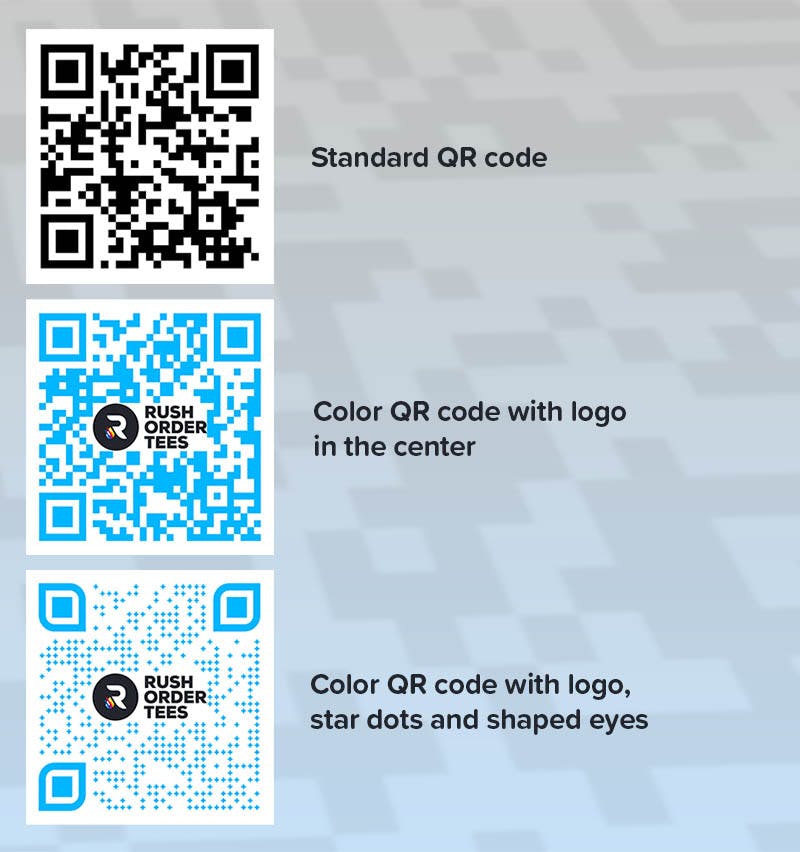
How to create a QR code
Creating a QR code logo is a simple process. The basic steps are as follows:
- Navigate to a QR code generator - There are lots of QR code generators on the web. Many will try to get you to sign up for an account or try to sell you features for an upgrade. You shouldn't have to, as you can get your code free without signing up. We recommend QR Code Monkey.
- Choose between static or dynamic - As we explained, static always links to the same information, whereas with dynamic, the information can be changed. You should choose one or the other based on your intended purposes. The most common type is static.
- Customize the design - Most QR code generators allow you to modify the look of the code without changing the functionality. Options typically include the following:
undefinedundefinedundefinedundefinedundefined - Test the QR code - Once the QR code is generated, use your own smartphone to scan it and make sure it links to the right place. Most smartphones have a built-in QR code app.
- Download the graphic - Click the button to download it to your device. Ideally, you want the highest-resolution graphic possible. For use on a t-shirt, the best format is a vector (SVG).
Shirt design using QR codes
Using a QR code to provide additional information will dramatically increase the design flexibility of any shirt. However, before jumping into the design stage, keep these important points in mind.
Color and contrast considerations
When printing a QR code on a T-shirt, it's important to consider the color and contrast of the code. A high-contrast color, such as black or dark blue, will ensure that it can be easily scanned. It's also a good idea to avoid placing the code on a busy or patterned background that could interfere with its readability.
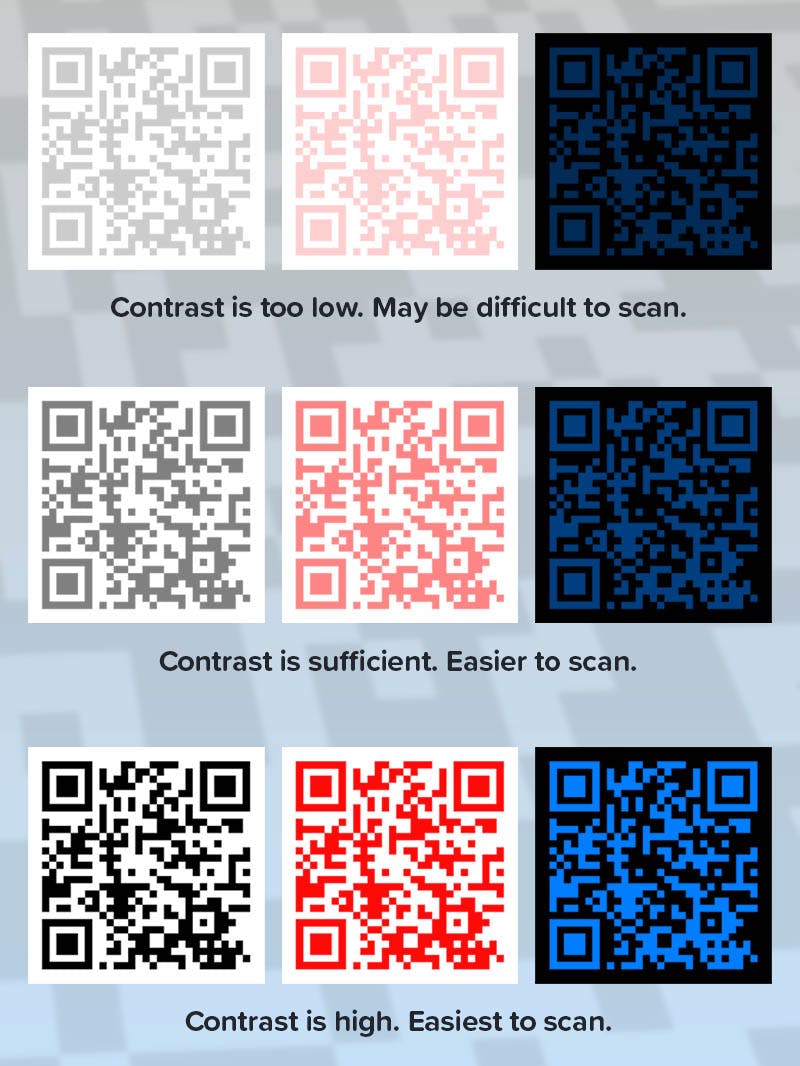
What size should the QR code be?
As a general rule, the QR code should be large enough to be easily scanned by a smartphone but not so large that it takes up the entire T-shirt. Consider when the scanning will happen. In close quarters at a casual, private social setting? Go smaller. From a distance in a public setting? Go larger.
We recommend a minimum size of 1" x 1". But larger sizes are always better for readability and to be seen–and scanned–from a greater distance. Learn more about QR code sizing.
Printing method for QR code t-shirts
Several printing methods can be used to print QR codes on T-shirts, including screen printing, digital printing, dye sublimation, and heat transfer. In fact, the only method to avoid is embroidery because it's not quite accurate enough for the QR code to work reliably.
We recommend heat transfers. This method has the cleanest lines and edges, which is ideal for the accurate reproduction of QR codes for scanning.
QR code shirt design examples
There are many ways to incorporate QR codes into t-shirt designs. We recommend striving for simplicity and clarity. The purpose of QR codes is for people to scan them, so it's best to make that clear with a prominent location and unobstructed placement within the design.
Here are three location options for successfully including a QR code in your T-shirt design:
Primary element
In this example, the QR code is front and center. A design like this would be ideal for someone doing event registration, a merch booth, or working a promotional table at a conference. Using the QR code as the primary element is the simplest treatment and requires minimal design.
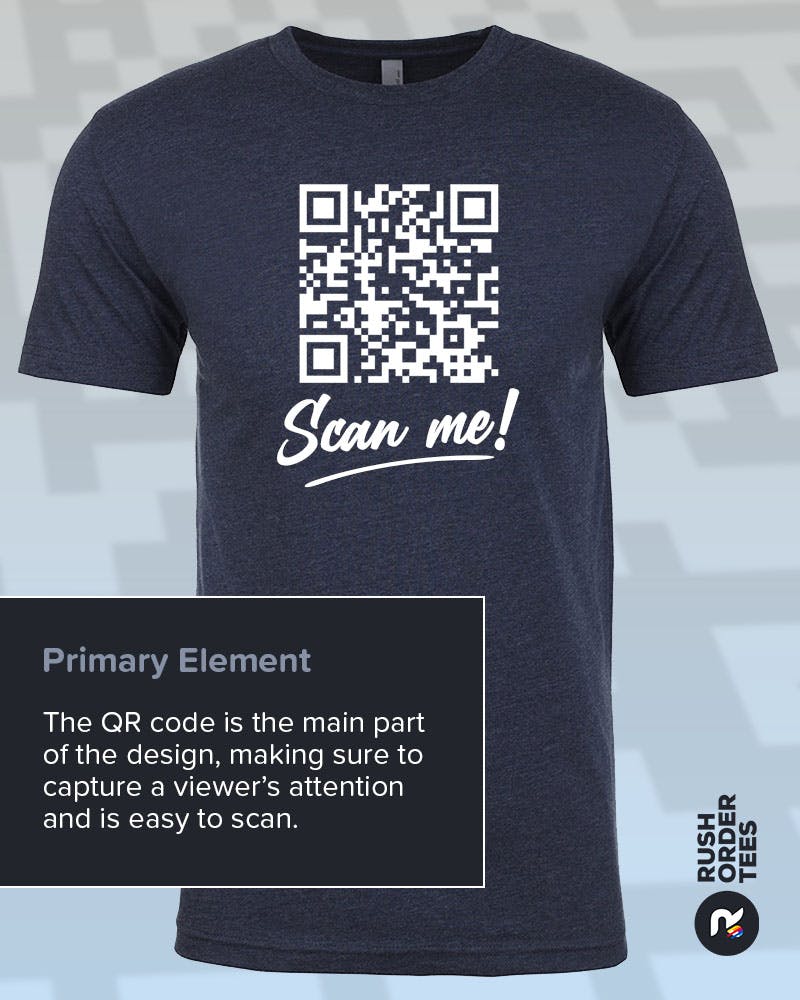
Using this approach, a large Quick Response code can be added to the front or back of the shirt with an accompanying call to action, like Scan Me, Get More Info, or Schedule an Appointment. This is a functional design that works well for events with competing brands, such as a tradeshow.
Secondary element
In this example, the QR code is up high on the back of the shirt. A design like this would be ideal for event workers or staff shirts, where the main design or logo is on the front. QR codes act as an excellent supporting element.
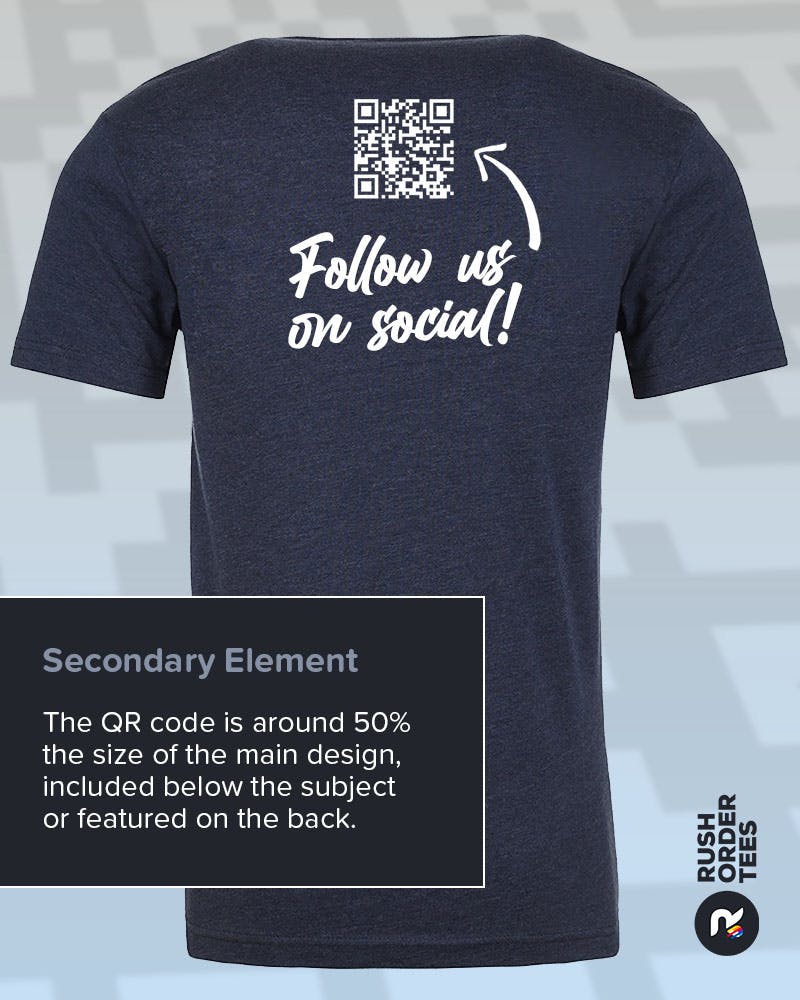
This approach offers the best of both worlds by immediately conveying the desired message and providing additional information. The code can be incorporated into the main design itself or added to the shirt in several different print locations. This would be ideal for event workers or staff shirts where the scannable code is added to the back of a shirt that has a primary design on the front.
Small added element
In this example, a smaller QR code is added to the sleeve, off to the side, or at the bottom of the design. A design like this would be ideal for promotional shirts and giveaways. Here, it's been added to the sleeve.
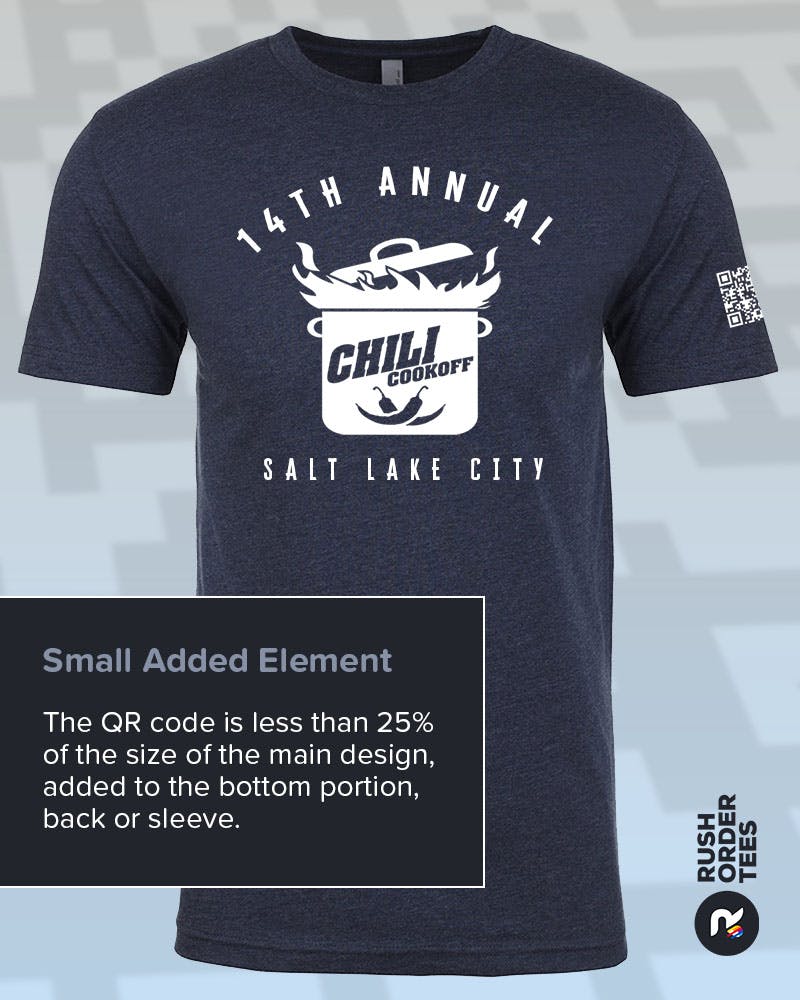
The ability to scan a small area means that a QR code can be used as an added element on almost any design. Not only does it offer users the ability to get more information, but it can be applied in locations that won't disrupt the overall design.
QR Codes Improve T-Shirt Design
QR codes help designers find the balance between creating a great t-shirt design and communicating information. We’ve found that by considering these guidelines, you're much more likely to design a QR code t-shirt that everyone will want to wear.
Once you get your QR code, upload it to our easy-to-use Design Studio and put it on your shirt. Scan ya later!

Imri Merritt
About the Author
A graduate of the Multimedia program at the University of the Arts in Philadelphia, Imri Merritt is an industry veteran with over 20 years of graphic design and color separations experience in the screen printing industry.

